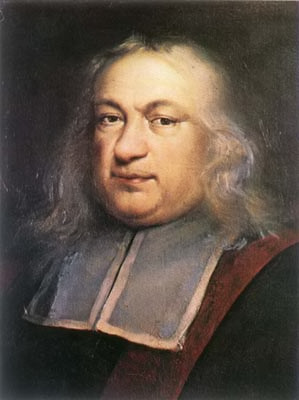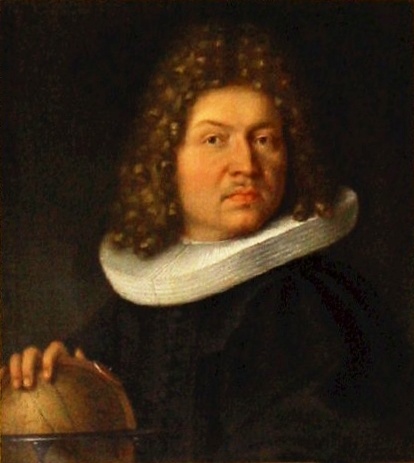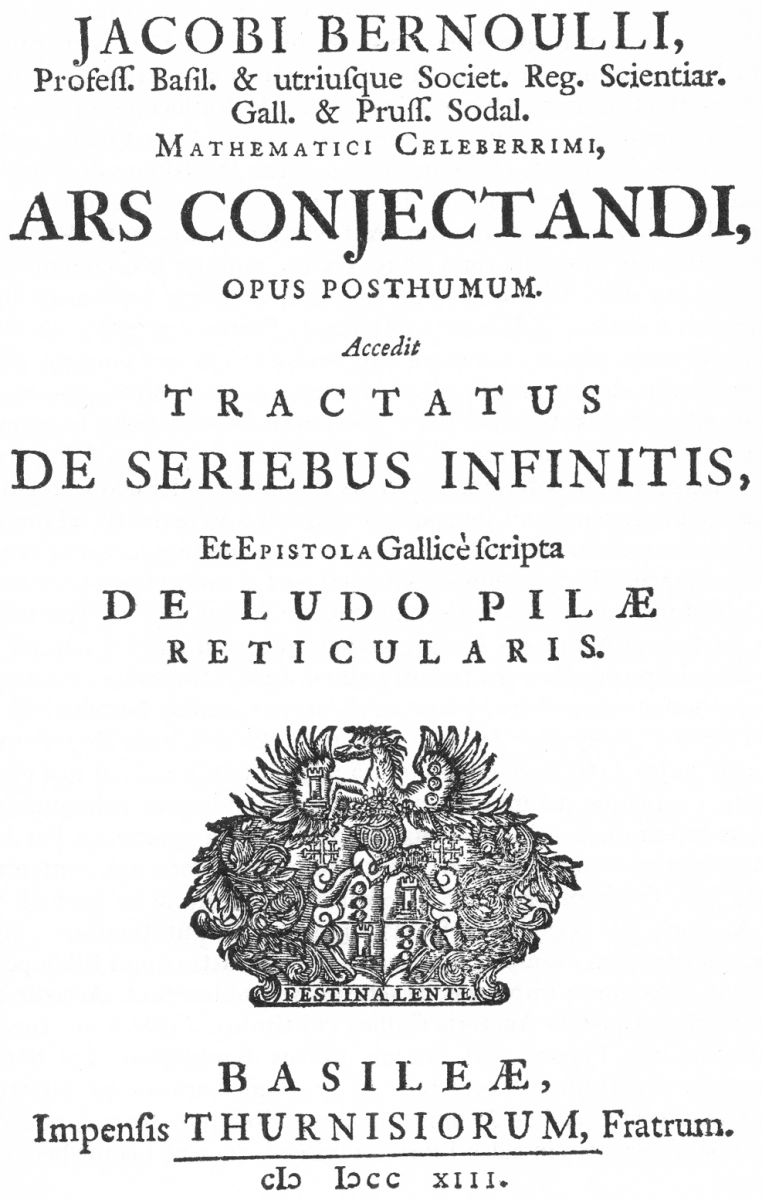- About MAA
- Membership
- MAA Publications
- Periodicals
- Blogs
- MAA Book Series
- MAA Press (an imprint of the AMS)
- MAA Notes
- MAA Reviews
- Mathematical Communication
- Information for Libraries
- Author Resources
- Advertise with MAA
- Meetings
- Competitions
- Programs
- Communities
- MAA Sections
- SIGMAA
- MAA Connect
- Students
- MAA Awards
- Awards Booklets
- Writing Awards
- Teaching Awards
- Service Awards
- Research Awards
- Lecture Awards
- Putnam Competition Individual and Team Winners
- D. E. Shaw Group AMC 8 Awards & Certificates
- Maryam Mirzakhani AMC 10 A Awards & Certificates
- Two Sigma AMC 10 B Awards & Certificates
- Jane Street AMC 12 A Awards & Certificates
- Akamai AMC 12 B Awards & Certificates
- High School Teachers
- News
You are here
Figurate Numbers and Sums of Numerical Powers: Fermat, Pascal, Bernoulli
Introduction
In 1636 Pierre de Fermat wrote to Gilles Personne de Roberval that he could solve "what is perhaps the most beautiful problem of all arithmetic." By this he meant the two millennium old problem of finding a closed formula for a sum of \(k\)-th powers \(\sum_{i=1}^{n}i^{\,k},\) which stretches from the Pythagoreans and Archimedes through many mathematicians, including Nicomachus, Āryabhata, al-Karajī, ibn al-Haytham, Fermat, Pascal, Bernoulli, and Euler, culminating in the discovery of the Bernoulli numbers and the Euler-MacLaurin summation formula, which enabled Euler to rise to fame by first guessing and then proving that the sum of the reciprocal squares is \(\pi^{2}/6.\) Here we introduce and provide for instructors a student project based on original sources in this story by Fermat, Pascal, and Bernoulli, designed for a course in combinatorics or advanced discrete mathematics.
 |
 |
 |
Figure 1. Left to right, the three protagonists for our project, Pierre de Fermat, Blaise Pascal, and Jakob Bernoulli (Source: Wikimedia Commons)
The quest for formulas for sums of powers, motivated largely by the aim of finding areas and volumes, is a primary theme throughout the evolution of discrete mathematics, and students may learn it from beginning to end through primary historical sources in [2, Chapter 1]. From two portions of that sequence we have created primary source project modules for students,
- one for an introductory discrete mathematics or calculus course, presented in the Convergence article, Sums of Powers in Discrete Mathematics: Archimedes Sums Squares in the Sand, and
- the present project, "Figurate Numbers and Sums of Numerical Powers: Fermat, Pascal, Bernoulli," for a more advanced combinatorics course.
Both projects are part of a larger collection published in Convergence, and an entire combinatorics course can be taught from a selection of these projects. For additional projects, see Primary Historical Sources in the Classroom: Discrete Mathematics and Computer Science.
Our project Figurate Numbers and Sums of Numerical Powers: Fermat, Pascal, Bernoulli is ready for students, and the Latex source is also available for instructors who may wish to modify the project for students. The comprehensive "Notes to the Instructor" presented next are also appended to the project itself.

Figure 2. Pascal's "Arithmetical Triangle," as presented in his 1665 Traité du Triangle Arithmetique (Treatise on the Arithmetical Triangle) (public domain [3])
Notes to the Instructor
This project is for students of upper division discrete mathematics or combinatorics, and connects sums of powers to figurate numbers, binomial coefficients, Pascal's triangle, and Bernoulli numbers via the writings of Fermat, Pascal, and Jakob Bernoulli. It follows a portion of the epic story of formulas for sums of powers that stretches from the Pythagoreans to Euler and is central in the development of discrete mathematics and combinatorics.
Many of the techniques and phenomena introduced in a discrete mathematics or combinatorics course simply arise naturally in this project, like recursive definitions, delicate and challenging work with summations and inequalities, counting and geometry, binomial coefficients and combination numbers, and proofs by mathematical induction, including strong induction. Instead of separately covering various such topics and techniques, that class time could simply be spent on the project, and students will learn those things in the process.

Figure 3. Title page from Jakob Bernoulli's 1713 Ars Conjectandi (public domain [1])
The only formal prerequisites are a facility with proofs, mathematical induction, the binomial theorem, and calculus. The project is quite flexible, and the instructor can choose from various activities offered. The full project can be completed in at most four to five weeks, and for a shorter project the instructor may choose selectively; some exercises are marked as optional if they are not critical to later work. Students can work productively in groups, with group or individual writeups. Many of the ideas and knowledge in the project are acquired through guided discovery exercises, a number of which are open-ended, so the instructor should work through all the details before assigning any student work, and select carefully from the big picture if exercises are omitted. Students may need substantial guidance with some parts.
The goal is for students to learn many basic notations, techniques, and skills in the context of an historically and mathematically authentic big motivating problem with multiple connections to other mathematics. Hopefully this will be much more effective and rewarding than simply being asked to learn various skills for no immediately apparent application.
The project also asks students to conjecture from patterns they generate, develop their mathematical intuition and judgement, and try proving their conjectures, i.e., putting students in the creative mathematical driver seat in an authentic context. The setting of sums of powers in the context of primary sources allows a richness of questions and interpretations, and especially includes deep connections to geometry, the two-way interplay with calculus, and a richness of proof techniques.
Download the project Figurate Numbers and Sums of Numerical Powers: Fermat, Pascal, Bernoulli as a pdf file ready for classroom use.
Download the modifiable Latex source file for the project.
For more projects, see Primary Historical Sources in the Classroom: Discrete Mathematics and Computer Science.
Bibliography
[1] Bernoulli, Jakob, Ars Conjectandi, Basel, 1713.
[2] A. Knoebel, R. Laubenbacher, J. Lodder, D. Pengelley, Mathematical Masterpieces: Further Chronicles by the Explorers, Springer Verlag, New York, 2007.
[3] B. Pascal, Oeuvres de Blaise Pascal; publiees suivant l'ordre chronologique, avec documents complementaires, introductions et notes (Leon Brunschvicg, Pierre Boutroux, eds.), Hachette, Paris, 1904-14.
Acknowledgment
The development of curricular materials for discrete mathematics has been partially supported by the National Science Foundation's Course, Curriculum and Laboratory Improvement Program under grants DUE-0717752 and DUE-0715392 for which the authors are most appreciative. Any opinions, findings, and conclusions or recommendations expressed in this material are those of the authors and do not necessarily reflect the views of the National Science Foundation.
David Pengelley (New Mexico State University), "Figurate Numbers and Sums of Numerical Powers: Fermat, Pascal, Bernoulli," Convergence (July 2013), DOI:10.4169/loci003987




